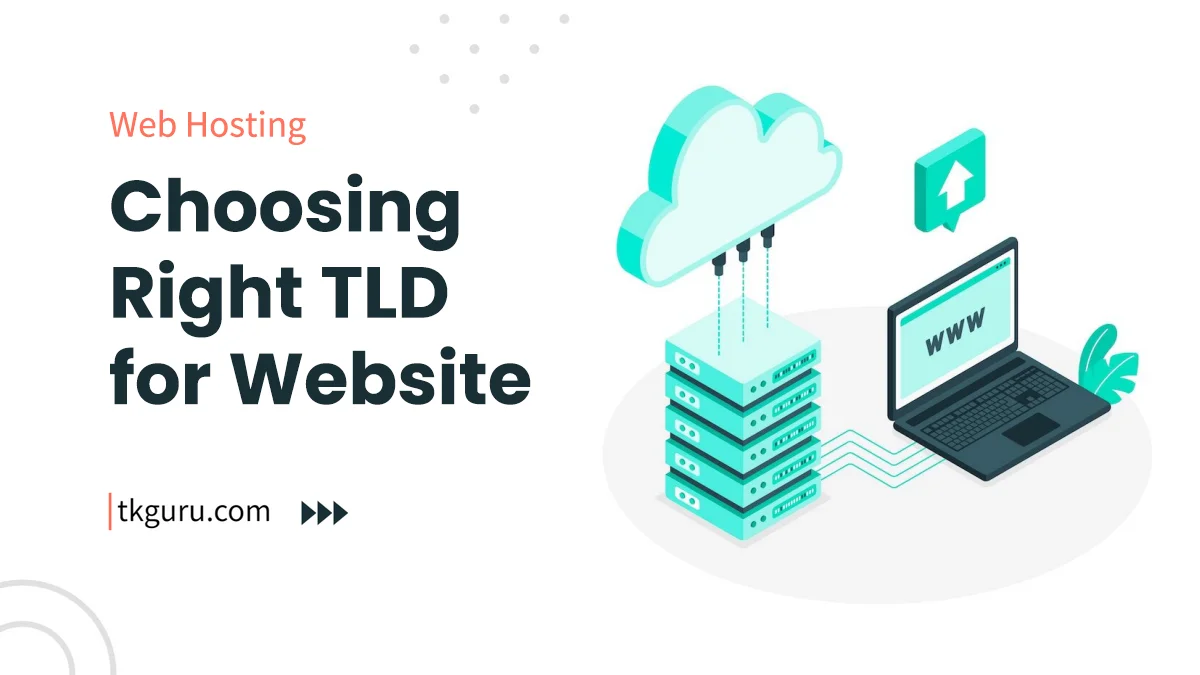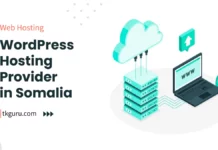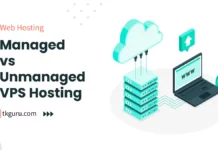Advertisements
Ratings
“What is Top Level Domain?
How can we get Top Level Domain?
Which Top Level Domain should we get?
The article below has answers to all your questions.
Please read this article carefully.

Top Level Domain – You must have seen most commonly used domains like .com, .in and you must have always understood that only websites with names like .com, .in have more value.
It is not so that apart from .com, .in, there are many such domains which have the same value as .com like .net, .org, .info. These domains are also called top level domains.
A Top Level Domain (TLD) is the last segment of a domain name, which follows the rightmost period.
It is the highest level of the domain name system (DNS) hierarchy and is used to identify the most general part of a web address or email address.
There are two main categories of TLDs: generic top-level domains (gTLDs) and country-code top-level domains (ccTLDs).
Some examples of gTLDs include .com, .org, .net, and .info, while some examples of ccTLDs include .ca (Canada), .uk (United Kingdom), and .au (Australia).
TLDs are managed and administered by the Internet Corporation for Assigned Names and Numbers (ICANN), which is responsible for ensuring the stability and security of the global DNS.
Contents
- 1. Top Level Domain
- 2. Understanding the Different Types of Top Level Domains (TLDs)
- 3. The Pros and Cons of Using a Country Code Top Level Domain (ccTLD)
- 4. Choosing the Right Top Level Domain (TLD) for Your Website
- 5. How to Register a Top Level Domain (TLD) for Your Website
- 6. Top Level Domain (TLD) SEO: How Your Domain Extension Affects Your Rankings
- 7. Exploring New Top Level Domains (nTLDs): Are They Worth the Investment?
- 8. Top Level Domain (TLD) Branding: How Your Domain Name Affects Your Business Identity
- 9. The Role of Top Level Domains (TLDs) in Online Branding and Marketing
- Conclusion
- Top Level Domain FAQs
1. Top Level Domain
A top-level domain (TLD) is one of the highest level domains according to rank in the Domain Name System (DNS).
The last segment (example.com) of a domain name is known as the domain. For example the domain name www.example.com has the domain .com.
Apart from domain .com, there are many top-level domains, such as .net, .org, .info etc. Most of these are used for general purposes, such as .org for organizations, .info for information sites, etc.
If the .com version of your chosen website name is unavailable, another top-level domain may be available.
Both these domain names will be seen in different form like, mywebsite.com and mywebsite.org are two different domain names.
One company can register the .com version and another company can register the .org version.
Note: Before registering domain name with domain extension of Country based Top Level Domain, you have to satisfy some criteria of that country.
Like you have to register 12341234.us domain name, then you have to satisfy the two conditions given below:
- Citizen status: Whoever is registering the domain name is either a U.S. Be a citizen or a permanent resident of the U.S. of or primary residence in the U.S. Of .
- Domain use: You have to tell the reason for registering your domain name like for business, for education, for government use etc.

2. Understanding the Different Types of Top Level Domains (TLDs)
Top Level Domains (TLDs) can be classified into three broad categories:
- Generic Top Level Domains (gTLDs): These are the most common TLDs and are not restricted to any specific type of organization or location. Some popular examples of gTLDs include .com, .org, .net, and .info.
- Country Code Top Level Domains (ccTLDs): These are TLDs that are assigned to countries and territories around the world. They are usually two letters long and represent a specific geographic location. Some examples of ccTLDs include .us for the United States, .ca for Canada, and .de for Germany.
- Sponsored Top Level Domains (sTLDs): These are TLDs that are managed by private organizations or groups and are designed for a specific community or purpose. Examples of sTLDs include .edu for educational institutions, .gov for government organizations, and .mobi for mobile websites.
S. No.
Domain Name Type
1.
Generic Top Level Domains
2.
Generic Restricted Top Level Domains
3.
Country code Top Level Domains
4.
Sponsored Top Level Domains
5.
Reserved Top Level Domains
2.1 Generic Top Level Domains
| Domain | Purpose |
| .com | Used for Commercial Purpose |
| .net | Used for Internet Service Providers |
| .info | Used for Credible Resource Websites |
| .org | Used for Non-profits Groups / Organization |
2.2 Generic Restricted Top Level Domains
| Domain | Purpose |
| .biz | Reserved for Business |
| .name | Reserved for individuals |
| .pro | Reserved for credentialed professionals and related entities |
2.3 Sponsored Top Level Domains
| Domain | Purpose |
| .aero | Reserved for members of the air-transport industry |
| .asia | Reserved for Asia Pacific Companies, organisations and individuals |
| .cat | Reserved for the Catalan linguistic and cultural community |
| .coop | Reserved for cooperative associations |
| .edu | Reserved for post-secondary institutions accredited by an agency on the U.S. Department of Education |
| .gov | Reserved for United States Government |
| .int | Reserved for organizations established by international treaties between governments |
| .jobs | Reserved for human resource managers |
| .mil | Reserved for the United States Military |
| .mobi | Reserved for consumers and providers of mobile products and services |
| .museum | Reserved for museums |
| .post | Reserved for postal services |
| .tel | Reserved for businesses and individuals to publish their contact data |
| .travel | Reserved for travel agents, airlines, hoteliers, tourism bureaus, etc. |
2.4 Reserved Top Level Domains
| Domain | Purpose |
| .example | Used for documentation or as examples (example.com, example.net and example.org) |
| .invalid | Used for testing as a domain which wouldn’t work |
| .local | Used for Local network |
| .localhost | Used for avoid conflict with the traditional use of localhost |
| .onion | Used for Connection to the Tor network |
| .test | Used for testing DNS software |
2.5 Country code Top Level Domains
| Domain | Purpose |
| A | |
| .AC | Ascension Island |
| .AD | Andorra |
| .AE | United Arab Emirates |
| .AF | Afghanistan |
| .AG | Antigua and Barbuda |
| .AI | Anguilla |
| .AL | Albania |
| .AM | Armenia |
| .AN | Netherlands Antilles |
| .AO | Angola |
| .AQ | Antarctica |
| .AR | Argentina |
| .AS | American Samoa |
| .AT | Austria |
| .AU | Australia |
| .AW | Aruba |
| .AX | Aland Islands |
| .AZ | Azerbaijan |
| B | |
| .BA | Bosnia and Herzegovina |
| .BB | Barbados |
| .BD | Bangladesh |
| .BE | Belgium |
| .BF | Burkina Faso |
| .BG | Bulgaria |
| .BH | Bahrain |
| .BI | Burundi |
| .BJ | Benin |
| .BL | Saint Barthelemy |
| .BM | Bermuda |
| .BN | Brunei Darussalam |
| .BO | Bolivia |
| .BR | Brazil |
| .BS | Bahamas |
| .BT | Bhutan |
| .BV | Bouvet Island |
| .BW | Botswana |
| .BY | Belarus |
| .BZ | Belize |
| C | |
| .CA | Canada |
| .CC | Cocos (Keeling) Islands |
| .CD | Congo, The Democratic Republic of the |
| .CF | Central African Republic |
| .CG | Congo |
| .CH | Switzerland |
| .CI | Cote d’Ivoire |
| .CK | Cook Islands |
| .CL | Chile |
| .CM | Cameroon |
| .CN | China |
| .CO | Colombia |
| .CR | Costa Rica |
| .CU | Cuba |
| .CV | Cape Verde |
| .CX | Christmas Island |
| .CY | Cyprus |
| .CZ | Czech Republic |
| D | |
| .DE | Germany |
| .DJ | Djibouti |
| .DK | Denmark |
| .DM | Dominica |
| .DO | Dominican Republic |
| .DZ | Algeria |
| E | |
| .EC | Ecuador |
| .EE | Estonia |
| .EG | Egypt |
| .EH | Western Sahara |
| .ER | Eritrea |
| .ES | Spain |
| .ET | Ethiopia |
| .EU | European Union |
| F | |
| .FI | Finland |
| .FJ | Fiji |
| .FK | Falkland Islands (Malvinas) |
| .FM | Micronesia, Federated States of |
| .FO | Faroe Islands |
| .FR | France |
| G | |
| .GA | Gabon |
| .GB | United Kingdom |
| .GD | Grenada |
| .GE | Georgia |
| .GF | French Guiana |
| .GG | Guernsey |
| .GH | Ghana |
| .GI | Gibraltar |
| .GL | Greenland |
| .GM | Gambia |
| .GN | Guinea |
| .GP | Guadeloupe |
| .GQ | Equatorial Guinea |
| .GR | Greece |
| .GS | South Georgia and the South Sandwich Islands |
| .GT | Guatemala |
| .GU | Guam |
| .GW | Guinea-Bissau |
| .GY | Guyana |
| H | |
| .HK | Hong Kong |
| .HM | Heard Island and McDonald Islands |
| .HN | Honduras |
| .HR | Croatia |
| .HT | Haiti |
| .HU | Hungary |
| I | |
| .ID | Indonesia |
| .IE | Ireland |
| .IL | Israel |
| .IM | Isle of Man |
| .IN | India |
| .IO | British Indian Ocean Territory |
| .IQ | Iraq |
| .IR | Iran, Islamic Republic of |
| .IS | Iceland |
| .IT | Italy |
| J | |
| .JE | Jersey |
| .JM | Jamaica |
| .JO | Jordan |
| .JP | Japan |
| K | |
| .KE | Kenya |
| .KG | Kyrgyzstan |
| .KH | Cambodia |
| .KI | Kiribati |
| .KM | Comoros |
| .KN | Saint Kitts and Nevis |
| .KP | Korea, Democratic People’s Republic of |
| .KR | Korea, Republic of |
| .KW | Kuwait |
| .KY | Cayman Islands |
| .KZ | Kazakhstan |
| L | |
| .LA | Lao People’s Democratic Republic |
| .LB | Lebanon |
| .LC | Saint Lucia |
| .LI | Liechtenstein |
| .LK | Sri Lanka |
| .LR | Liberia |
| .LS | Lesotho |
| .LT | Lithuania |
| .LU | Luxembourg |
| .LV | Latvia |
| .LY | Libyan Arab Jamahiriya |
| M | |
| .MA | Morocco |
| .MC | Monaco |
| .MD | Moldova |
| .ME | Montenegro |
| .MF | Saint Martin |
| .MG | Madagascar |
| .MH | Marshall Islands |
| .MK | Macedonia, The Former Yugoslav Republic of |
| .ML | Mali |
| .MM | Myanmar |
| .MN | Mongolia |
| .MO | Macao |
| .MP | Northern Mariana Islands |
| .MQ | Martinique |
| .MR | Mauritania |
| .MS | Montserrat |
| .MT | Malta |
| .MU | Mauritius |
| .MV | Maldives |
| .MW | Malawi |
| .MX | Mexico |
| .MY | Malaysia |
| .MZ | Mozambique |
| N | |
| .NA | Namibia |
| .NC | New Caledonia |
| .NE | Niger |
| .NF | Norfolk Island |
| .NG | Nigeria |
| .NI | Nicaragua |
| .NL | Netherlands |
| .NO | Norway |
| .NP | Nepal |
| .NR | Nauru |
| .NU | Niue |
| .NZ | New Zealand |
| O | |
| .OM | Oman |
| P | |
| .PA | Panama |
| .PE | Peru |
| .PF | French Polynesia |
| .PG | Papua New Guinea |
| .PH | Philippines |
| .PK | Pakistan |
| .PL | Poland |
| .PM | Saint Pierre and Miquelon |
| .PN | Pitcairn |
| .PR | Puerto Rico |
| .PS | Palestinian Territory, Occupied |
| .PT | Portugal |
| .PW | Palau |
| .PY | Paraguay |
| Q | |
| .QA | Qatar |
| R | |
| .RE | Reunion |
| .RO | Romania |
| .RS | Serbia |
| .RU | Russian Federation |
| .RW | Rwanda |
| S | |
| .SA | Saudi Arabia |
| .SB | Solomon Islands |
| .SC | Seychelles |
| .SD | Sudan |
| .SE | Sweden |
| .SG | Singapore |
| .SH | Saint Helena |
| .SI | Slovenia |
| .SJ | Svalbard and Jan Mayen |
| .SK | Slovakia |
| .SL | Sierra Leone |
| .SM | San Marino |
| .SN | Senegal |
| .SO | Somalia |
| .SR | Suriname |
| .ST | Sao Tome and Principe |
| .SU | Soviet Union |
| .SV | El Salvador |
| .SY | Syrian Arab Republic |
| .SZ | Swaziland |
| T | |
| .TC | Turks and Caicos Islands |
| .TD | Chad |
| .TF | French Southern Territories |
| .TG | Togo |
| .TH | Thailand |
| .TJ | Tajikistan |
| .TK | Tokelau |
| .TL | Timor-Leste |
| .TM | Turkmenistan |
| .TN | Tunisia |
| .TO | Tonga |
| .TP | Portuguese Timor |
| .TR | Turkey |
| .TT | Trinidad and Tobago |
| .TV | Tuvalu |
| .TW | Taiwan |
| .TZ | Tanzania, United Republic of |
| U | |
| .UA | Ukraine |
| .UG | Uganda |
| .UK | United Kingdom |
| .UM | United States Minor Outlying Islands |
| .US | United States |
| .UY | Uruguay |
| .UZ | Uzbekistan |
| V | |
| .VA | Holy See (Vatican City State) |
| .VC | Saint Vincent and the Grenadines |
| .VE | Venezuela |
| .VG | Virgin Islands, British |
| .VI | Virgin Islands, U.S. |
| .VN | Viet Nam |
| .VU | Vanuatu |
| W | |
| .WF | Wallis and Futuna |
| .WS | Samoa |
| Y | |
| .YE | Yemen |
| .YT | Mayotte |
| .YU | Yugoslavia |
| Z | |
| .ZA | South Africa |
| .ZM | Zambia |
| .ZW | Zimbabwe |
6. The Importance of Domain Name Extensions: Why Top Level Domains Matter
Domain Name Extensions play a significant role in creating a strong online presence for your business or personal brand.
Top-Level Domains (TLDs) can affect the credibility, visibility, and accessibility of your website to potential customers.
Choosing the right TLD can help you stand out from the crowd, improve search engine rankings, and build trust with your audience.
It’s essential to choose a TLD that aligns with your brand’s values, industry, and target audience.
3. The Pros and Cons of Using a Country Code Top Level Domain (ccTLD)
A country code top-level domain (ccTLD) is a type of top-level domain (TLD) that is reserved for a specific country or territory. Here are some pros and cons of using a ccTLD for your website:
Pros:
- Geographic relevance: If you are targeting a specific country or region, having a ccTLD can signal to users that your website is relevant to their location.
- Higher search engine rankings: Search engines often prioritize ccTLDs for users searching within that specific country or region, which can give your website a higher ranking.
- Better domain availability: Because ccTLDs are specific to a country or region, there may be more domain names available compared to other TLDs.
Cons:
- Limited scope: If you plan on expanding your website’s reach beyond a specific country or region, using a ccTLD may limit your ability to do so.
- Limited recognition: Depending on the audience and industry, some users may not recognize or trust a ccTLD as much as a more well-known TLD.
- Limited features: Some ccTLD registries may not offer the same features or support as other TLDs, which can limit your website’s functionality.
4. Choosing the Right Top Level Domain (TLD) for Your Website
Choosing the right top-level domain (TLD) for your website can have a significant impact on your online presence. Here are some factors to consider:
- Your target audience: Consider the geographic location of your target audience. If you’re targeting a global audience, a .com TLD might be a good choice, while a country-specific TLD might be more appropriate if you’re targeting a specific country.
- Your industry: Some industries have specific TLDs that are commonly used. For example, the .gov TLD is reserved for government agencies, while the .edu TLD is reserved for educational institutions.
- Your branding: Your TLD can also impact your branding. Using a unique TLD can help your website stand out, while using a well-known TLD like .com can provide credibility.
- SEO considerations: While TLDs do not directly impact SEO, using a country-specific TLD can help your website rank higher in that country’s search results.
- Availability: Finally, consider the availability of your desired TLD. Some TLDs may be more popular than others and may already be taken, so be prepared to consider alternative options.
Overall, choosing the right TLD is an important decision for your website. Consider the factors above to help you make an informed choice that will benefit your online presence.
5. How to Register a Top Level Domain (TLD) for Your Website
To register a top-level domain (TLD) for your website, follow these steps:
- Choose a domain name registrar: There are many domain name registrars available, such as GoDaddy, Namecheap, and Bluehost. Choose a registrar that suits your needs.
- Search for your desired domain name: Use the registrar’s search function to see if your desired domain name is available. If it’s not available, try different variations until you find an available option.
- Check the price: Each registrar sets its own prices for domain registration. Make sure to check the price before proceeding.
- Add the domain name to your cart: Once you’ve found an available domain name and confirmed the price, add it to your cart.
- Complete the registration process: Follow the registrar’s instructions to complete the registration process. You’ll typically need to provide personal information and payment details.
- Verify your registration: After you’ve registered your domain name, you’ll need to verify your registration through an email or a link sent to you by the registrar.
Once your domain name is registered, you can connect it to your website and start using it. It’s important to remember to renew your domain name registration before it expires to avoid losing it.
6. Top Level Domain (TLD) SEO: How Your Domain Extension Affects Your Rankings
The impact of top-level domains (TLDs) on SEO is a complex topic, and there is no definitive answer. However, here are some factors that may affect your search engine rankings based on your TLD:
- Geotargeting: If you have a country-specific TLD, such as .co.uk or .de, search engines may assume that your website is relevant to users in that specific country.
- Trust: Some TLDs, such as .gov or .edu, are restricted and require verification, which can make them more trustworthy in the eyes of search engines.
- Branding: Your TLD can help establish your brand identity and help users remember your website.
- Competition: Depending on your industry, certain TLDs may be more competitive than others, so it’s important to consider this when choosing a domain.
Ultimately, the quality of your content and the user experience you provide on your website will have the greatest impact on your SEO rankings. While choosing the right TLD can play a role in your SEO strategy, it’s only one of many factors to consider.
7. Exploring New Top Level Domains (nTLDs): Are They Worth the Investment?
New Top Level Domains (nTLDs) have emerged as an alternative to traditional domain extensions.
They are domain extensions that go beyond the classic .com, .org, .net, and .edu extensions, and include domain extensions such as .club, .app, .xyz, .blog, and many others. Here are some things to consider when exploring nTLDs:
- Relevance: Choose an nTLD that is relevant to your business or industry. For example, if you are running a tech startup, .tech might be a good choice for you.
- Availability: Check the availability of the nTLD you want. Some nTLDs might be more popular than others, making it more difficult to find an available domain name.
- Branding: Consider how the nTLD will affect your branding. Will it be easy for your customers to remember and type in your domain name?
- SEO: Although Google has said that nTLDs are treated the same as traditional TLDs in terms of search engine rankings, some SEO experts believe that having a keyword-rich domain name can still give you an advantage.
- Price: Some nTLDs may be more expensive than traditional TLDs, so make sure to consider the cost before making a decision.
In general, nTLDs can be a good option if you want to stand out from the crowd and find a domain name that better reflects your brand or business.
However, it’s important to do your research and consider all the factors before making a decision.
8. Top Level Domain (TLD) Branding: How Your Domain Name Affects Your Business Identity
Your domain name can have a significant impact on your business identity and branding. It’s often the first thing people see and remember about your business, and it can communicate a lot about your company’s values, mission, and niche.
Choosing the right top level domain (TLD) for your website is an important part of building a strong brand identity. Here are some ways your domain name affects your business identity:
- Perception: Your domain name can create a perception of your brand. For example, a .edu TLD creates a perception of an educational institution, while a .org TLD can create a perception of a nonprofit organization.
- Memorability: A domain name that is easy to remember and spell can help your brand stick in people’s minds.
- Niche: Choosing a TLD that is specific to your niche can help communicate your business focus and values. For example, a .green TLD can communicate an eco-friendly focus.
- Geographic location: Choosing a country code TLD can indicate the geographic location of your business, which can be useful for local businesses.
- Legal considerations: It’s important to consider legal considerations when choosing a domain name, such as avoiding trademark infringement and other legal issues.
Overall, your domain name and TLD can have a significant impact on your brand identity and perception. It’s important to choose a domain name that reflects your business values and niche while also being memorable and legally sound.
9. The Role of Top Level Domains (TLDs) in Online Branding and Marketing
Top Level Domains (TLDs) play an essential role in online branding and marketing by providing a unique and memorable domain name that represents a brand or business.
A well-chosen TLD can help establish credibility and authority in a particular industry or market, making it easier to build a loyal customer base.
A TLD can also help improve search engine optimization (SEO) by providing a more relevant domain name that includes relevant keywords and phrases.
Additionally, using a TLD that matches a specific geographic location can help businesses reach a local audience and improve their visibility in local search results.
Ultimately, the choice of TLD depends on the specific goals and needs of the business, as well as the availability of relevant domain names.
Conclusion
If you are going to create a website, then first of all you will need a domain name and if you find a particular domain name right for your website but its .com version is not available, then you can create a website by taking other versions as well. Are . All top level domains have the same value as .com.
Top Level Domain FAQs
A Top Level Domain (TLD) is the last segment of a domain name. It is the part of the web address that appears after the dot. For example, in the web address 'www.example.com'.com
There are two main types of TLDs: generic TLDs (gTLDs) and country-code TLDs (ccTLDs). The gTLDs are used for a variety of purposes and are not restricted to a particular country, while ccTLDs are specific to a particular country or territory.
Some examples of gTLDs include .com, .org, .net, .edu, .info, and .biz. There are also newer gTLDs that are more specific, such as .blog, .shop, and .app.
Some examples of ccTLDs include .uk for the United Kingdom, .de for Germany, .jp for Japan, .br for Brazil, and .au for Australia. Each country or territory has its own ccTLD.
TLDs are managed by the Internet Corporation for Assigned Names and Numbers (ICANN), which is a non-profit organization that coordinates and maintains the internet's domain name system. ICANN oversees the allocation and management of TLDs, as well as the policies and procedures that govern their use. What is a Top Level Domain (TLD)?
How many types of TLDs are there?
What are some examples of gTLDs?
What are some examples of ccTLDs?
How are TLDs managed?
| Web Hosting | Website |
| WordPress | Google Adsense |
| SEO | Affiliate Marketing |
| Blogging | YouTube |
Recent Posts
- 5 Best WordPress Hosting Provider in Somalia 2023
- 5 Best WordPress Hosting Provider in Austria 2023
- 5 Best WordPress Hosting Provider in Luxembourg 2023
- 5 Best WordPress Hosting Provider in Switzerland 2023
Related Tags
Top-level domain, TLD, Domain name, Website, Online presence, Domain extensions, Web address, Internet domains, Domain registrar, Choosing a domain






